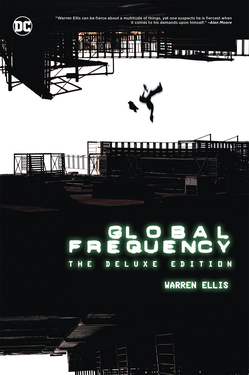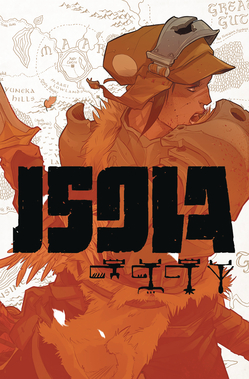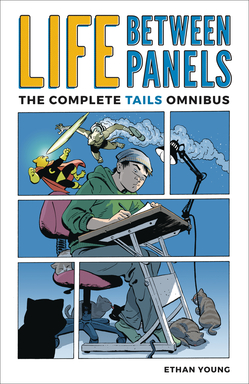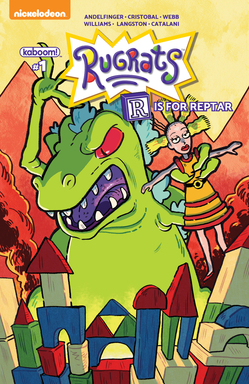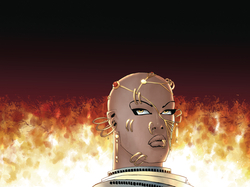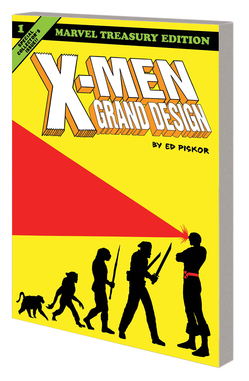Analog, Isola, Xerxes & More in Required Reading: Comics for 4/4/2018
Main Art by David O'Sullivan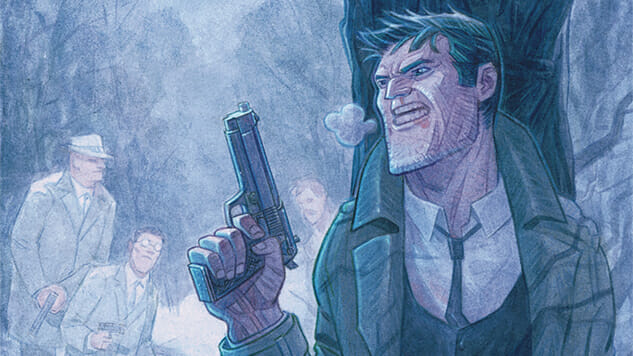
A new month is upon us, and with April Fools’ Day falling on a Sunday this year, we’ve been mercifully spared the worst in transparent corporate attempts to joke about on the internet. That means that every one of the suggestions below, from the speculative noir of Analog to the slice-of-life of Life Between Panels, the flaming vengeance of The Curse of Brimstone to the speedy heroism of Sonic the Hedgehog, are all genuine recommendations covering the best—or most noteworthy—new releases of the week. So crack open a well-researched dive into the X-Men or a bloody, embellished history lesson on pre-Spartan warfare and enjoy the dawn of a new month for sequential art.
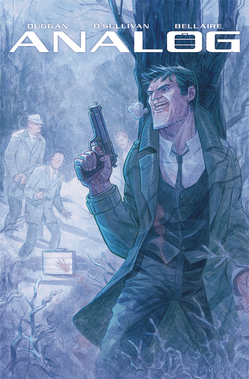 Analog #1
Analog #1
Writer: Gerry Duggan
Artist: David O’Sullivan
Publisher: Image Comics
As the Internet becomes a more indispensable part of modern life, it’s no surprise that stories about the invasive nature of technology have also become more common. From Neal Stephenson’s oeuvre to Warren Ellis’ Normal to Private Eye, the Brian K. Vaughan, Marcos Martin and Muntsa Vicente comic that launched Panel Syndicate, all sorts of ideas exist about the future of information security and privacy in the era of social media and cloud computing. Gerry Duggan and David O’Sullivan tackle exactly that subject in Analog, imagining a world just five years in the future when in order to be truly secure, data has to be delivered by hand, its safety guaranteed by armed couriers called Ledger Men. Duggan has worked on a slew of titles, mostly for Marvel, while O’Sullivan is a newcomer to American comics. O’Sullivan is joined on colors by Jordie Bellaire, one of the very best in the business, and the result looks more noir than cyberpunk, which should help Analog find its own niche among its subject matter. Caitlin Rosberg
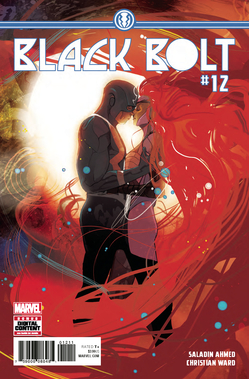 Black Bolt #12
Black Bolt #12
Writer: Saladin Ahmed
Artist: Christian Ward
Publisher: Marvel Comics
Over the course of 11 issues, Saladin Ahmed and Christian Ward pulled off something of a miracle with Black Bolt. The title character has never been particularly known for driving books on his own, and despite efforts to make the Inhumans more central both to Marvel’s 616 print universe and to the television side of the company’s life-action world, the Inhumans remained controversial—or simply disliked—among many fans. Black Bolt feels less like an Inhumans story and more like the kind of speculative fiction that Ahmed is best known for, with characters tangled up in lineage, duty and cosmic madness. Ward’s art is just as intense, vibrant and psychedelic as it is in Ody-C, but more structured, better contained and without excess objectification and hyper-sexualization. It’s a great, deeply human and intimate story that happens to be about Blackagar Boltagon, in a similar vein to Tom King and Gabriel Hernandez Walta’s run on Vision. For people who prefer their superhero stories to be largely self-contained and on the introspective side, Black Bolt is a good bet. This final issue of the series is set to bring the story to a sharp, intelligent end before Marvel launches The Death of the Inhumans later this year. Caitlin Rosberg
 The Curse of Brimstone #1
The Curse of Brimstone #1
Writer: Justin Jordan
Artist: Philip Tan
Publisher: DC Comics
Marvel’s Ghost Rider has historically featured a downtrodden everyman angle, whether that means a struggling biker-cum-circus performer or a Latino kid trying to juggle school, work, taking care of his brother and a demonic possession, so it makes sense that DC Comics’ analogue would tap the same fiery vein. It’s impossible to read Justin Jordan and Philip Tan’s The Curse of Brimstone #1 and not feel like this is Ghost Rider for the MAGA age, as protagonist Joe Chamberlain makes a deal with the devil to maintain his small-town way of life instead of, I don’t know, learning a new trade. (If you think I’m projecting, here’s a direct quote: “I wish there was something to make this place good again. Make it great.”) As with the other New Age of DC Heroes books, The Curse of Brimstone feels less like a bold new era and more like an enjoyably simple take on an established Marvel concept air-lifted into the world of Batman and Superman. Philip Tan’s shadowy art can often become overly murky, but works here layering smoke and flames to devilish effect. If you keep your expectations low, Brimstone and its sibling titles can scratch that early-‘90s-Marvel-derivative itch nicely. Steve Foxe
-

-

-

-

-

-

-

-

-

-

-

-

-

-

-

-

-

-

-

-

-

-

-

-

-

-

-

-

-

-

-

-

-

-

-

-

-

-

-

-

